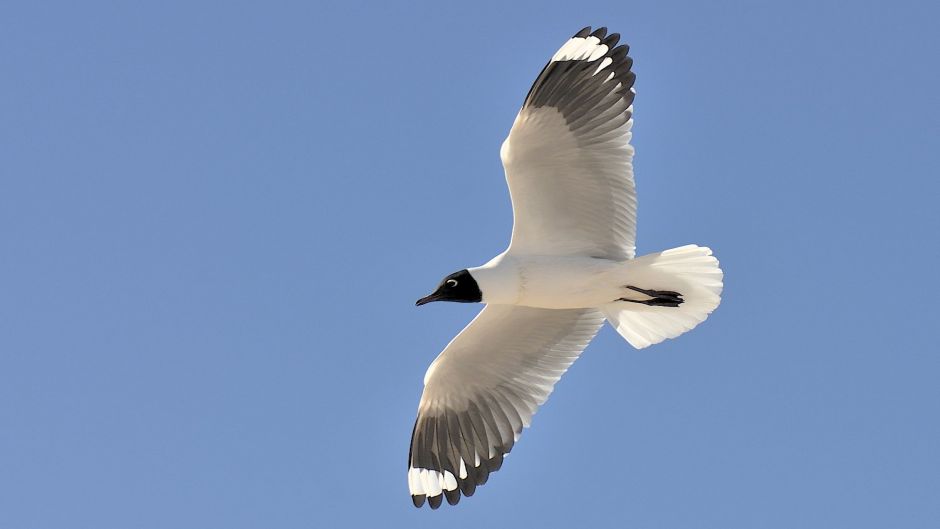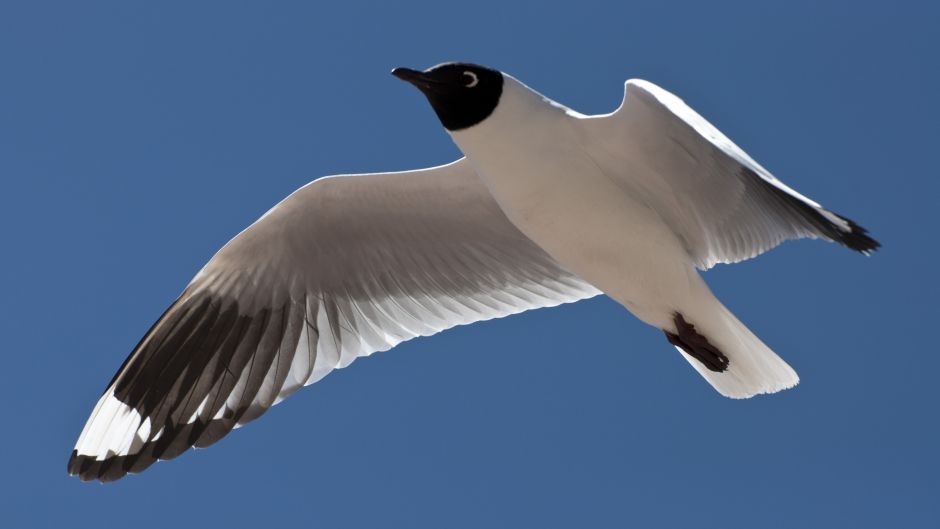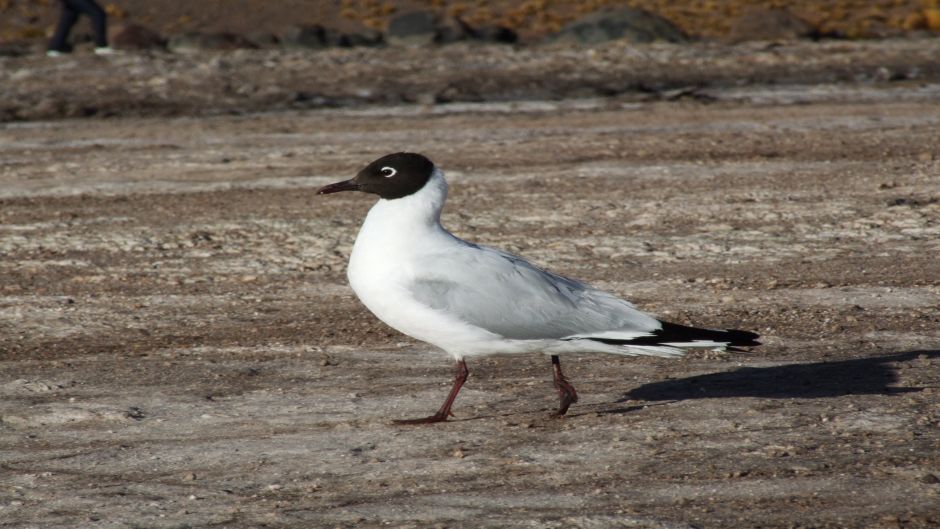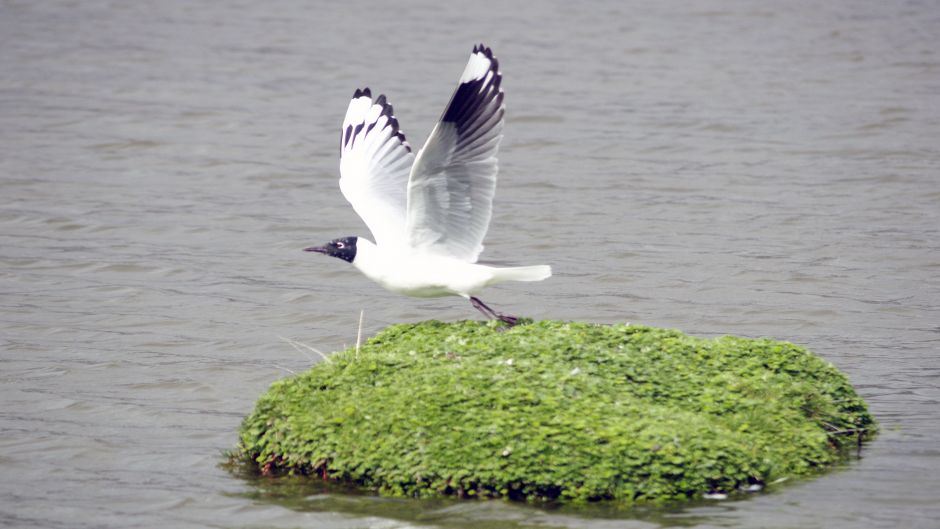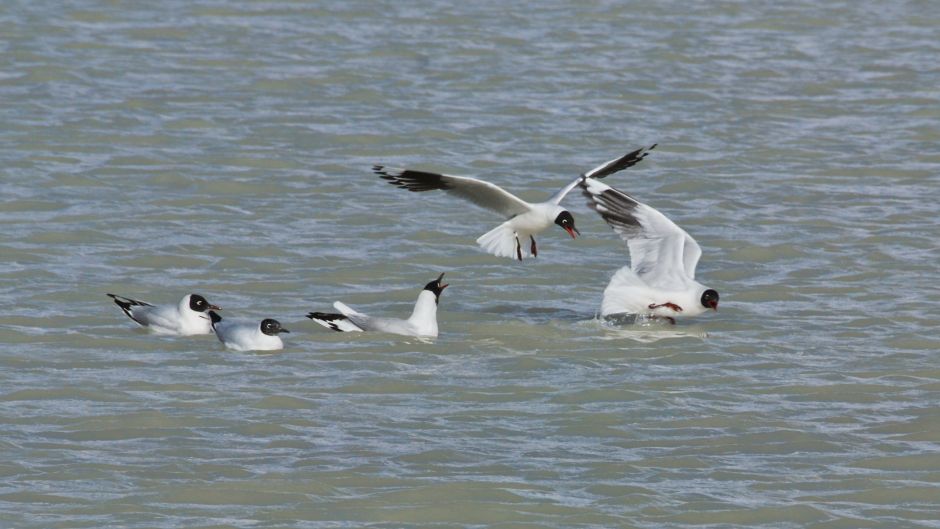Andean Gull, Guia de Fauna. RutaChile
Familia:
Laridae Genero:
Chroicocephalus Nombre Cientifico: serranus
NAME (S) LOCAL (S):
Tern, Caulle, quiulla
DISTRIBUTION IN CHILE:
From Arica to Ãuble. More low until Aysen.
HABITAT:
Lakes of the high mountains. In winter some copies down to the coast.
DESCRIPTION:
Length: 44 - 45 cms.
Summer plumage: Head black, white semicircle in the eye. White collar. Back and coverts gray. Chest, abdomen, subcaudal, underwings and white tail. Chest with pink tinge. Primaries black with white glasses on the outside. Bill and legs dark reddish.
Winter plumage: Head white with some dark spots behind the eye. Legs darker.
Immature: Head brownish gray. Back brown. Underparts cinnamon brown stained. Black legs.
Lives and nests in summer in lakes and freshwater lagoons in the high Andes from the extreme north to Ãuble and fewer to the Aysen region in the south. However, the onset of winter down to the pre-Andean areas and even the coast in search of less stringent times, where he can be seen in small flocks walking along the coastline.
Very characteristic during the summer is the head with a black cap to the neck which is easily identified, but during the winter, the head is almost white, with some slight dark spots behind the eyes.
The nesting season, whose position is performed between the months of December and January, is performed only on high mountain lakes, where it typically builds a floating nest of aquatic plants in the sector, away from the shore and anchored to other plants. Also nests in the ground on rocks or small islands where nests are less bulky. Place between 2 and 3 brown eggs spotted with light green and purple spots and shades from light brown to almost black.
During the day, the adults leave the eggs in the hot sun while looking for fish in the waters to feed, but to appear the first cold winds in the afternoon, return immediately to the nest to protect eggs or offspring, making a and shrill shriek.
Countries where lives Gaviota Andina
ARGENTINA
BOLIVIA
CHILE
ECUADOR
PERU
